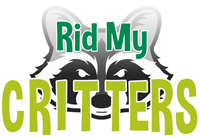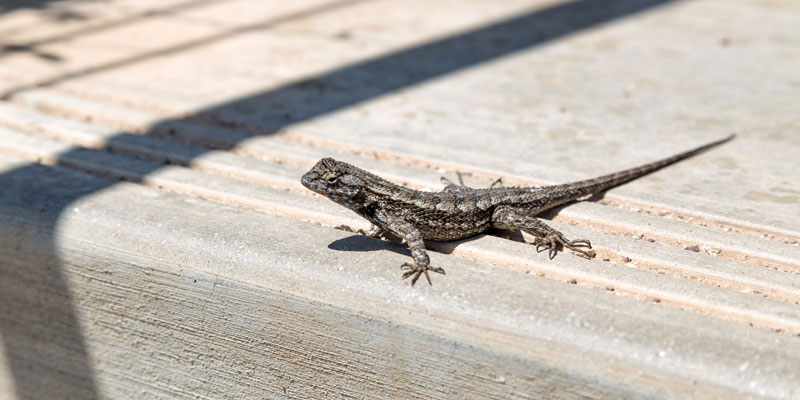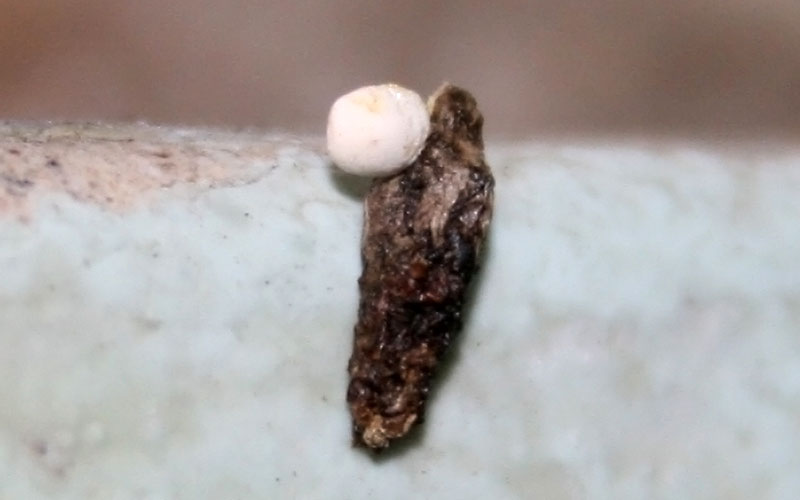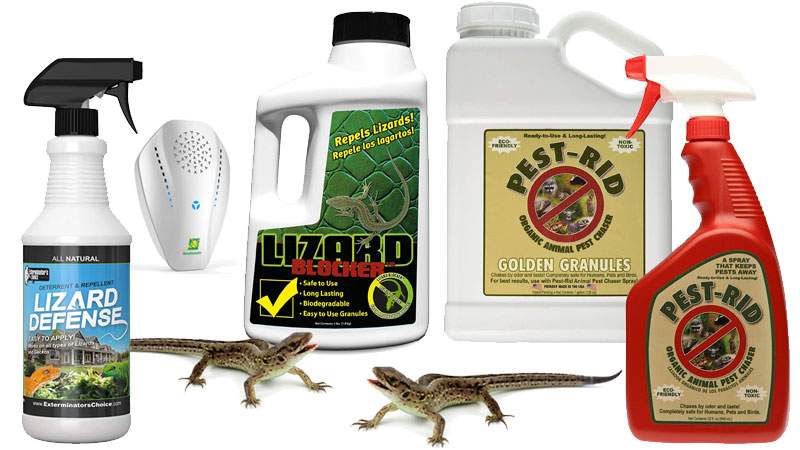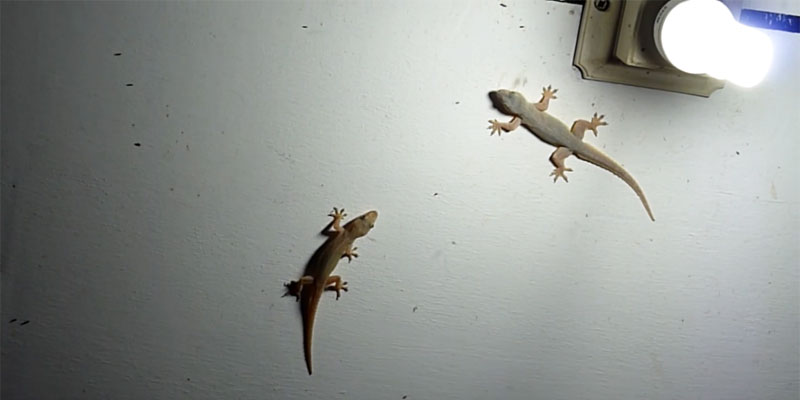If you live here in Florida (or anywhere else lizards are common), you’ll know the frustration of getting house lizards. Getting rid of lizards is difficult because you often don’t even know they’re there.
But lizard poop is a dead giveaway once you know what to look for. Let’s look at what lizard droppings look like, if they’re toxic, and what to do when you find them.
What Do Lizard Droppings Look Like?
Thankfully, you don’t have to be a rocket scientist (or scatologist) to be able to identify lizard poop.
Depending on the lizard species, lizard droppings will vary in shape and size.
Urban and pet lizards generally pave poop measuring up to 1/4 inches long and 1/8 inch wide at the biggest.
What sets lizard scat apart from that of other pests, such as rat poop, is the tapered ends with a white tip.
The white tips are caused from solid and liquid waste being excreted from the same opening. The uric acid crystallizes, forming the distinctive tips.
Lizard Poop Pictures
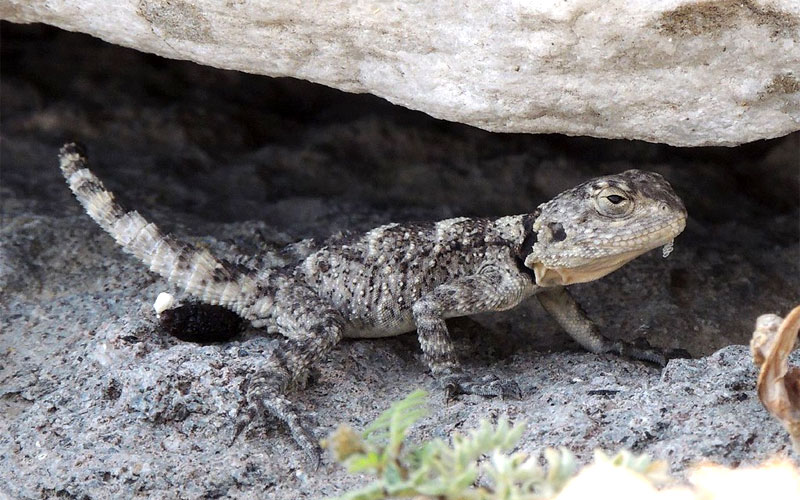
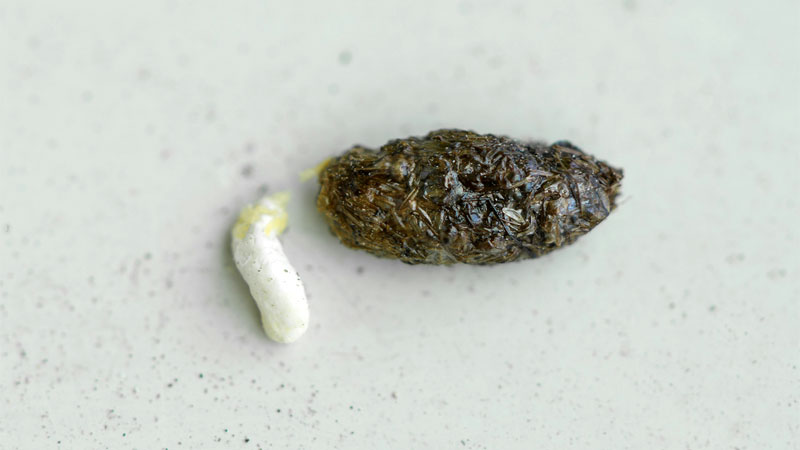
Why is Lizard Poop Black and White?
You’re probably wondering why lizard poop appears black and white. This is because it contains two different substances: the black part is the regular feces, while the white part is the nitrogenous waste excreted as uric acid.
Lizards have a unique way of excreting both these substances together, which creates the distinct coloration in their poop.
The black part of the poop is the digested food that has passed through the lizard’s digestive system. Just like other animals, lizards break down their food to extract nutrients, leaving behind waste products. As the lizard’s body processes the food, it turns the waste into a dark, solid substance which is then eliminated as feces.
The white part of the poop, on the other hand, is comprised of uric acid. Uric acid is a nitrogenous waste excreted by lizards instead of urea, which is what mammals typically excrete. The unique quality of uric acid is that it is less toxic than urea and requires much less water for excretion. This enables lizards to conserve water, which is so important for their survival in environments with limited water sources.
When lizards excrete their waste, the black feces and white uric acid come out together and form the characteristic two-toned poop that you might have seen before. This aspect of lizard droppings can help you identify whether the poop you find belong to a lizard or some other creature.
Lizard Poop vs Snake Poop
Most species of lizards have poop in pellet form with the uric acid crystals in the end (or laying close by). Snake poop lacks a pellet form.
Another difference is that larger snakes swallow their prey whole. This is why you’ll often find the hair, scales, and bones of other animals in snake poop.
Snakes have a very efficient process for digesting prey, using very little of their body’s energy. The bits that would take too much energy to process end up in the excrement.
Read Also: Does a Snake Have Bones?
Lizard Poop vs Other Common Pest Poops
It’s also easy to compare wild or house lizard droppings from other common household pests.
For example, it’s a well-known fact that cupcake sprinkles are just mouse poop with food coloring added. Rat poop is a bigger form of mouse poop.
Spider poop and bird poop are mostly liquid types of waste, making them look more like someone dripped paint.
Bed bug poop and flea dirt involve a completely different waste material – partially digested blood. They look like little dark red to black ink spots that spread into a reddish stain when dampened.
Is Lizard Poop Toxic?
Just like any other animal droppings, lizard poop is toxic in nature.
Lizard droppings contain salmonella and may also include other bacteria or diseases. Salmonella can lead to food poisoning, and in the case of infants, it can be fatal.
Therefore it’s important to clean up any lizard poop and sanitize the area.
See Also: What Do Spider Droppings Look Like?
How to Clean Lizard Droppings
Cleaning up lizard droppings doesn’t have to be difficult.
- Wear gloves to avoid coming in direct contact with the poop.
- Use a paper towel or old piece of cloth to remove the droppings.
- Next, take a strong chemical disinfectant like Lysol, pour some on a clean rag or paper towel, and wipe the area as thoroughly as possible.
How to Get Rid of Lizards
The best way to get rid of lizards is to keep them from arriving in the first place. A good commercial lizard repellent is worth its weight in gold.
Keep a clean house and seal any potential entry points to keep lizards and other critters from sneaking in.
Make sure no clutter starts to accumulate, since this could encourage a lizard to begin nesting. By removing their comfort and food sources, lizards will be less interested in hanging around
Lizards love well-lit areas, as those are the spots where the highest number small insects are attracted. So be sure to switch off any outdoor lights when they’re not needed.
You may also need to spray insecticides and clear your surroundings of any small insects that could be an easy meal for lizards.
Finally, seal any leaks and remove sources of stagnant water from your home and property.
How to Exterminate Lizards More Professionally
If you’ve spotted lizard poop in your home, then there is a 100% chance that they’re already hiding in your home.
In the case of one or two lizards, the above-mentioned solutions are good enough to remove them and keep them away from your house.
However, in case of a heavy lizard infestation, you’ll need to call in the big guns.
Professional pest control services may cost less than you think. Even better, once they remove the lizards, they’ll help ensure these pests don’t come back.
Final Words
Lizards consist of more than 4,000 species and belong to the Order Squamata, which also includes snakes and amphibians.
You can find lizards on every continent except for Antarctica, although in the US, the two biggest hotspots for lizard phobias (and other common pest phobias) are Hawai’i and Florida.
But while you may hate them, lizards help to eliminate insect pests and rarely mean any harm.
Once you’ve identified their droppings, consider whether or not you want to keep them around. Either way, be sure to either clean up their poop or invest in lizard diapers to reduce the risk of contamination.
- How to Identify Skunk Poop (With Pictures) - April 1, 2024
- You Really Don’t Need That Opossum Trap - January 4, 2024
- How to Set a Mouse Trap Without Getting Hurt - December 28, 2023
